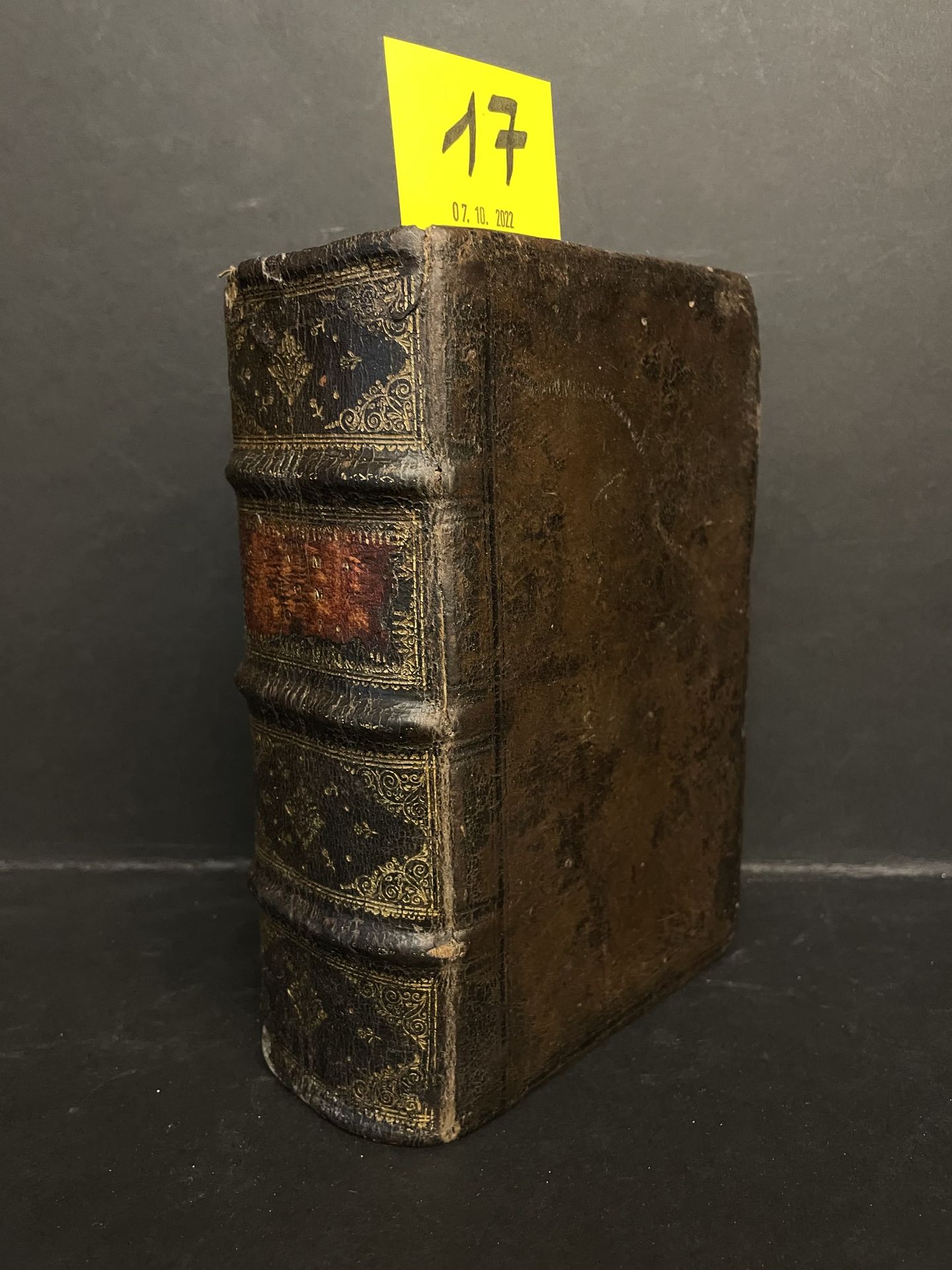Description
THOMAS OF AQUIN - Secunda secundae partis S. theologiae cum Commentariis R.D.D. de Vio Caiet (...). Bergomi, Typis Comini Venturae, 1590, fort 8°, (24, with a beautiful engraved title)-1472 p., full 18th c. brown calf, spine ribbed and ornamented, title-piece (some lacks and traces of wear, but good copy). Old ownership mark on the title. A very fine printing from Bergamo at the end of the 16th c. Comino Ventura is a printer-librarian: official printer ("urbis impressor") of the city of Bergamo. In January 1580, the city appoints three deputies for the revision of his prints and the protection of his workshop. Died in January 1617. His successors were his sons Valerio and Pietro Ventura (CERL Thesaurus). The monumental work of Thomas Aquinas consists of three (four) parts: the prima pars (God and creation), the secunda pars (general morality), the secunda secundae partis (particular morality) and the tertia pars (Christ, the sacraments, the last ends). The parts are usually found separately, especially the secunda secundae which examines 189 questions, ranging from "the object of faith" to "entry into religion". It is the study of human acts in particular (in particulari), in their singularities and particularities. One finds in particular very precise descriptions of human acts such as anger, fatigue, etc. Thomas de Vio, known as Caietan or Cajétan, born in 1469 in Gaeta (in Latin Caieta, hence his nickname) in the present province of Latina, Lazio, and died in 1534 in Rome, was an Italian theologian and cardinal. He focused on commenting on the Summa Theologica of St. Thomas Aquinas in order to fight against the theses of Luther. His interpretations are very precise and based on logic. Cajétan is considered to be one of the first thinkers who systematized the thought of St. Thomas Aquinas into the current of thought called Thomism. A few separate volumes located, mostly in poor condition. Uncommon.
17
THOMAS OF AQUIN - Secunda secundae partis S. theologiae cum Commentariis R.D.D. de Vio Caiet (...). Bergomi, Typis Comini Venturae, 1590, fort 8°, (24, with a beautiful engraved title)-1472 p., full 18th c. brown calf, spine ribbed and ornamented, title-piece (some lacks and traces of wear, but good copy). Old ownership mark on the title. A very fine printing from Bergamo at the end of the 16th c. Comino Ventura is a printer-librarian: official printer ("urbis impressor") of the city of Bergamo. In January 1580, the city appoints three deputies for the revision of his prints and the protection of his workshop. Died in January 1617. His successors were his sons Valerio and Pietro Ventura (CERL Thesaurus). The monumental work of Thomas Aquinas consists of three (four) parts: the prima pars (God and creation), the secunda pars (general morality), the secunda secundae partis (particular morality) and the tertia pars (Christ, the sacraments, the last ends). The parts are usually found separately, especially the secunda secundae which examines 189 questions, ranging from "the object of faith" to "entry into religion". It is the study of human acts in particular (in particulari), in their singularities and particularities. One finds in particular very precise descriptions of human acts such as anger, fatigue, etc. Thomas de Vio, known as Caietan or Cajétan, born in 1469 in Gaeta (in Latin Caieta, hence his nickname) in the present province of Latina, Lazio, and died in 1534 in Rome, was an Italian theologian and cardinal. He focused on commenting on the Summa Theologica of St. Thomas Aquinas in order to fight against the theses of Luther. His interpretations are very precise and based on logic. Cajétan is considered to be one of the first thinkers who systematized the thought of St. Thomas Aquinas into the current of thought called Thomism. A few separate volumes located, mostly in poor condition. Uncommon.
